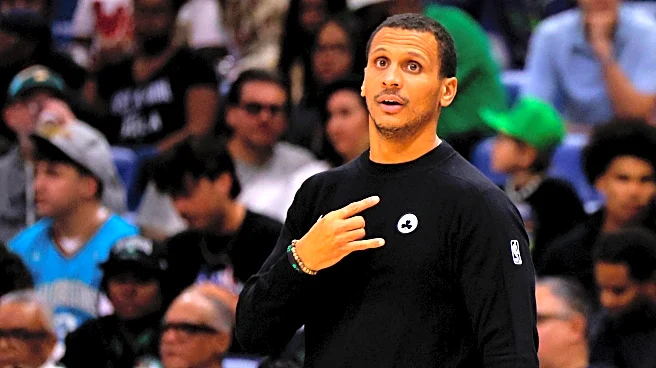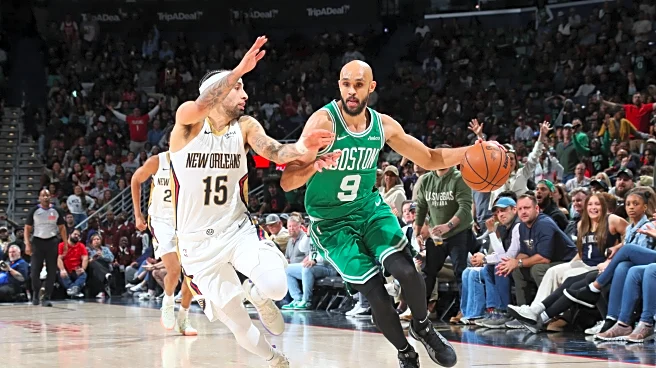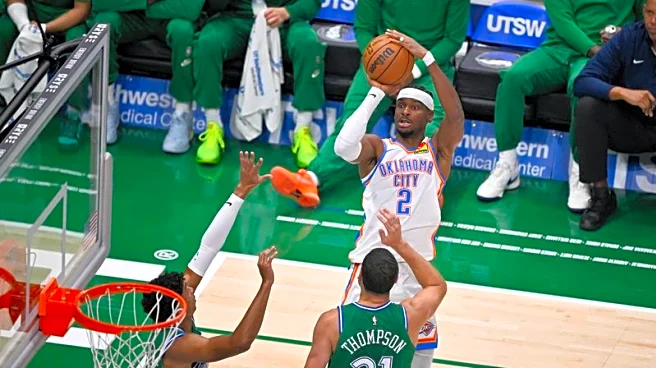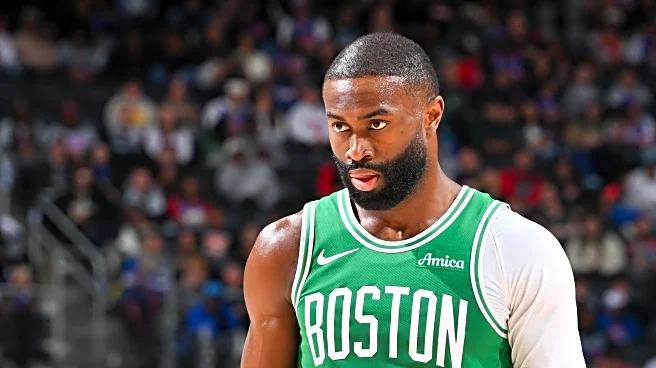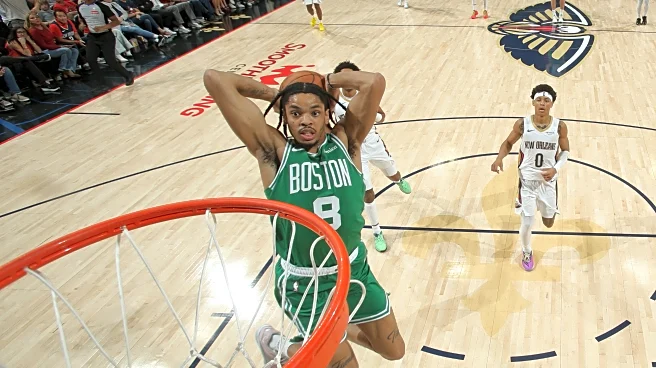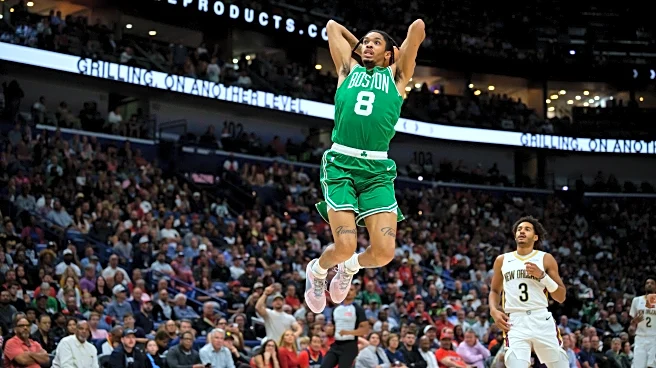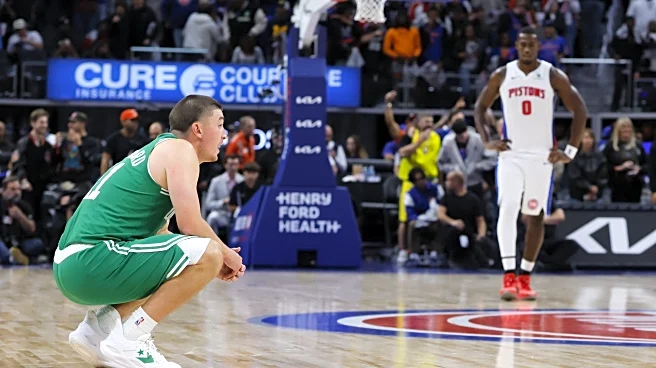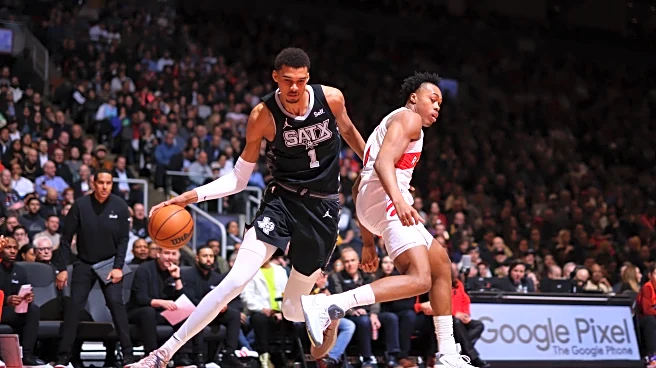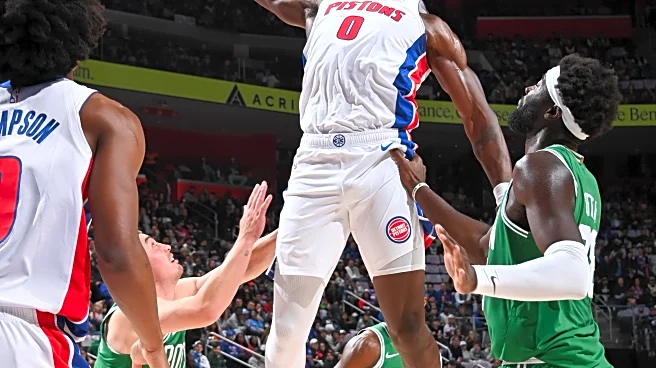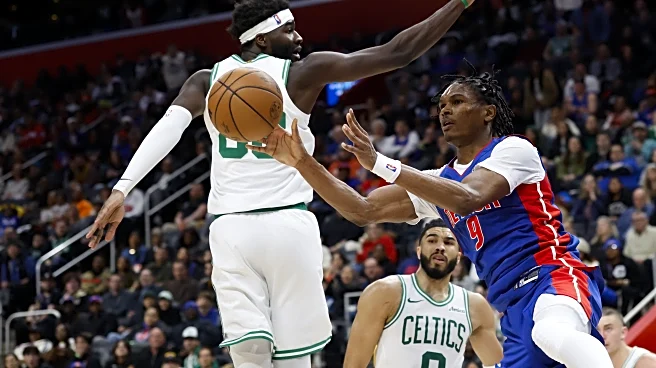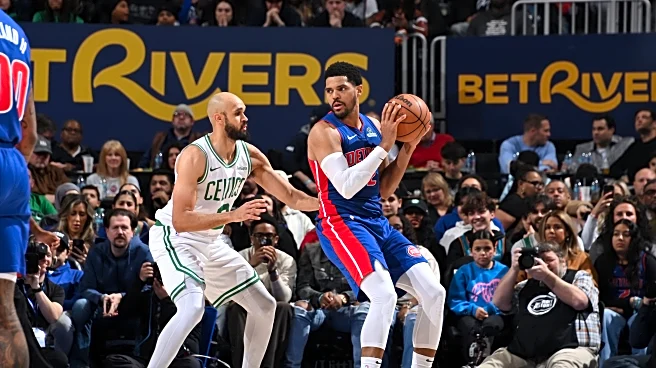#1 – The Celtics finally won the rebound battle
It’s not sexy, but that’s how you win games when you’re lacking talent. Joe Mazzulla’s men went after the offensive boards way more than usual this season: ▷ Against the 76ers: 26.5% Offensive Rebound
Rate ▷ At New York: 20.4% Offensive Rebound Rate ▷ At Detroit: 30.9% Offensive Rebound Rate ▷ At New Orleans: 42.6% Offensive Rebound Rate
Eleven of the sixteen offensive rebounds came after a three-point attempt, and that’s a pretty smart way to optimize all those missed shots from deep. While the Celtics have kept the same volume from three as in previous seasons, their efficiency has gone down. Yet, by crashing the boards more aggressively, the Celtics can turn these long shots into extra possessions.
In putback situations, the Celtics scored 1.44 points per possession, driving their offensive efficiency up. Despite a small lineup, the Celtics could lean into what the Rockets did last season by forcing extra possessions to compensate for the lack of shooting. Led by Neemias Queta, who grabbed seven offensive boards in 22 minutes, the Green Army might have found a blueprint to stay competitive.

To do so, they’ll also need to better control the defensive glass, which was easier yesterday with Zion Williamson sitting on the bench.
#2 – The “transition Celtics” are getting there
Last season, per CleaningTheGlass.com, the Celtics were dead last in transition frequency. Whether it was after a steal or a defensive rebound, the Celtics weren’t great at running after winning back possession. Overall, they generated transition attempts on only 59% of their steals (30th) and on 22% of their defensive rebounds (28th).
Well, as promoted all season, this Celtics team is here to run — and they showed that last night. The Celtics generated transition opportunities on 80% of their steals against the Pelicans and on 48% of their defensive rebounds. Safe to say, Mazzulla-ball is about running now.
#3 – Josh Minott making noise
After Hugo Gonzalez sparkled, it was Minott’s turn to impress. Like the Spaniard, the most impressive part of his game came from defense. Despite being skinny, he can pressure full-court, and his long arms really bother any ball-handler trying to navigate the floor.
Even against one of the best shooters in the league, Minott managed to make life difficult. In the play below, he goes over the screen and, when he sees Trey Murphy III about to pull up, he jumps and uses his length to block the shot — a great display of his lateral mobility and wingspan impact on defense.
Offensively, the goal for him is to find ways to be impactful without shooting the ball, as opposing defenses don’t respect him as a shooter. His ability to crash the boards will be very useful since he’s often left alone beyond the arc, giving him space to attack. Also, learning how to cut behind the defense when the focus is on the ball will help him generate easy looks at the rim.
#4 – Creating space for Anfernee Simons
The first few games of Simons’ Celtics career have been a little concerning, especially on offense, where he was supposed to be an added value. Last night, the coaching staff made sure to generate some easy looks to get him going. On the play below, he first goes down to the right corner.
When Derrick White and Xavier Tillman start the pick-and-roll action, Baylor Scheierman, on Simons’ left, runs to the opposite side and creates space for the former Trail Blazer. Once his side is completely empty, White finds him, and Simons converts from deep.
Of course, most of his points came from self-creation, which isn’t always the most efficient way to score, but it felt like the Celtics were also creating some off-ball actions to get him open corner looks — which can help balance his offensive game. In the clip below, he waits in the corner as the pick-and-pop with White and Sam Hauser unfolds. Hauser’s quick relocation triggers the defensive help and gives another open opportunity for Simons.
#5 – Luka Garza x Payton Pritchard connection
With a new roster, it takes time to find potential pairings that develop synergy. Last night might have been the first glimpse of what the Garza–Pritchard duo could look like. Both are high-activity players on offense. Garza’s ability to keep setting solid screens can create space, especially if he can punish with the pick-and-pop.
Alongside Pritchard’s new scoring gravity, Luka can use the space when, as against the Pelicans, the defense decides to hedge and send two players at Pritchard. The Celtics guard’s recent playmaking improvements are shining in these situations, as he can spot the open space and find teammates once defenses overcommit to his scoring threat.
The combination of Garza’s pick-and-pop threat and Pritchard’s growing scoring and playmaking ability is creating a nice cocktail the Celtics could exploit this season when Queta is on the bench.
#6 – Queta’s screening synergy with Hauser
As the season unfolds, I keep being pleasantly surprised by Queta’s ability to create space with his screens. For players like Hauser, who can’t create separation by himself but knows how to exploit defensive gaps, that’s a great combination.
On this first play late in the third, Queta runs to Hauser, who’s in the corner, and sets a solid screen, forcing separation between Hauser and Jordan Hawkins. As Queta rolls to the rim, Derik Queen has to step up and slow down Hauser because of his shooting threat, and that’s an easy two.
A little later in the fourth, Queta sets another pindown screen for Hauser, but this time the defender, Herb Jones, tries to cheat and goes under the screen… bad call from the Pelicans wing, who gives Hauser enough time to pull from three — and that’s an eight-point lead for the Celtics.
#7 – Will D-White be able to become a creator for himself?
The biggest shift in D-White’s offensive approach this season is the volume of self-creation he has to carry. Since joining the Celtics, 65% of his made buckets were assisted. This season, that number has dropped to 35%, which is close to Donovan Mitchell’s creation level, to give some perspective.
While there was some hope he could create a bit more for himself, going from 65% to 35% assisted field goals might be too big a leap — and that explains why his efficiency dropped from 1.21 points per attempt to 0.89. Of course, the context and spacing don’t help, but the Celtics’ coaching staff might need to give White a bit more help on offense so he can find himself again.
#8 – On fire from mid-range
The Celtics still struggle to get to the rim and convert from beyond the arc, but they had one of their best mid-range performances of the season as a team: 70% from the floater zone (95th percentile) and 56% from the long mid-range (77th percentile) — both crucial to punish the Pelicans’ rim protection.
Led by Pritchard and JB, the Celtics converted efficiently from these zones. Joe Mazzulla’s team will need to maintain that efficiency as they shift toward a more mid-range-heavy roster. Last season, the Celtics ranked 29th in the share of two-point shots that weren’t at the rim; this year, they’re 10th. However, more floaters and mid-ranges will probably translate into a less efficient offense in the long run — but it worked well yesterday.
#9 – Is Queta becoming a good rim protector?
So far in his career, Queta has been a positive switch defender for a big man, but I wouldn’t say he’s had a strong impact as a drop defender or rim protector. Last night, though, he made some nice reads in drop coverage and made his presence felt at the rim.
He slides down nicely to slow and bother Fears’ drive, then turns and elevates to block the rookie’s layup attempt. Compared to what he sometimes does in drop coverage, it’s a solid example of his progress.
The numbers (small sample alert) back up this impression, as he’s decreased opponents’ efficiency at the rim by more than 10% this season — much better than last year, when his impact was only 5%. He played just 22 minutes and sometimes got into foul trouble, but his offensive and defensive improvements could lead to greater things!
#10 – The next 10 challenges
The Celtics finally got a win, and now they look forward — but be careful, the road will be bumpy! The Cavs and 76ers come first, then a three-game homestand against KD’s Houston, the surprising Utah Jazz coached by Will Hardy, and what could be an easy win against Washington. Then comes a three-game road trip with Orlando twice and the 76ers again. To wrap up this rough stretch, two home games against two of the West’s best — the Grizzlies and the Clippers.
How many games do you expect the Celtics to win in that stretch?
